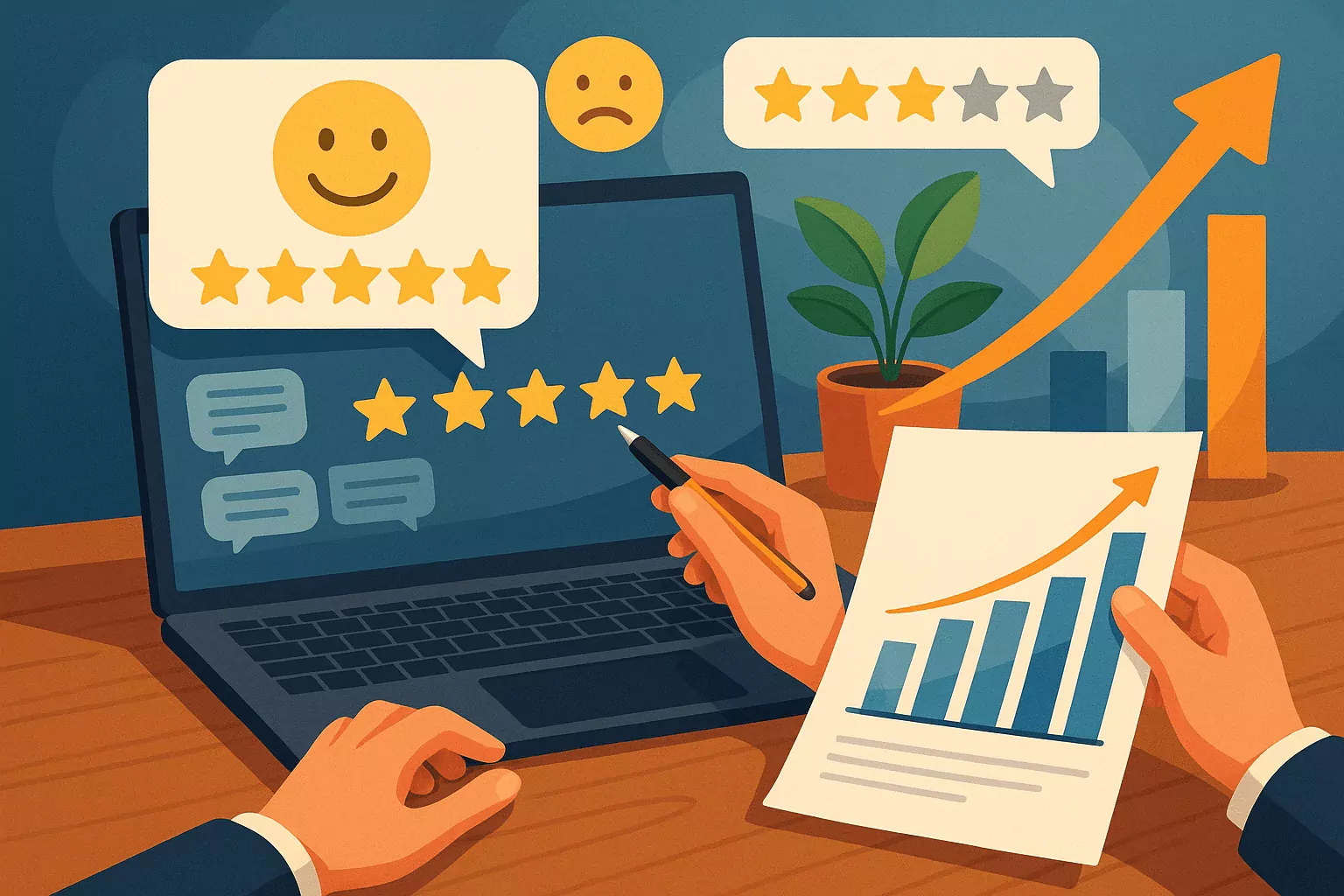How to Leverage Customer Feedback for Business Growth
Harness Customer Feedback to Drive Business Success and Build Stronger Customer Relationships

Introduction
In today's competitive market, understanding your customers is more crucial than ever. One of the most effective ways to gain insight into client needs is through customer feedback. This feedback can come in various forms, including customer reviews, user feedback, and client testimonials. By actively managing and analyzing this information, businesses can enhance customer satisfaction and make informed decisions that drive growth. Moreover, leveraging feedback helps identify areas for improvement, ensuring your services meet evolving client expectations. In this blog, we will explore actionable strategies for utilizing customer feedback to propel your business forward.
Main Content
Understanding the Importance of Customer Feedback
Customer feedback serves as a valuable resource for businesses looking to improve their offerings. It provides direct insight into what clients appreciate and what they feel needs enhancement. For instance, an online retailer may receive feedback indicating that customers find the checkout process cumbersome. By addressing this issue, the retailer can streamline the process, resulting in higher conversion rates. Additionally, understanding customer sentiment can lead to better product development, as businesses can tailor their offerings to match client desires.
Moreover, customer feedback helps in building trust and loyalty. When clients see that a business values their opinions and implements changes based on their suggestions, it fosters a sense of partnership. This relationship can lead to repeat business and positive word-of-mouth advertising. Research shows that companies that prioritize customer feedback experience a significant boost in customer loyalty and satisfaction levels.
Incorporating feedback management systems can further streamline the process. These systems allow businesses to collect, analyze, and respond to feedback efficiently. By utilizing tools that aggregate reviews from various platforms, businesses can gain a comprehensive view of customer sentiment, making it easier to identify trends and areas for improvement.
Effective Strategies for Collecting Customer Feedback
The first step in harnessing customer feedback is to establish effective collection methods. Surveys are one of the most common ways to gather insights. By crafting targeted questions, businesses can gain specific information about customer experiences. For example, a restaurant might ask patrons to rate their meal and service quality, providing valuable metrics for improvement.
Another effective method is utilizing social media platforms. Engaging with customers on these platforms encourages spontaneous feedback. Businesses can create polls or simply ask open-ended questions to spark conversation. Additionally, monitoring comments and messages provides real-time insights into customer opinions.
These strategies not only promote customer engagement but also demonstrate that the business values client opinions. This proactive approach can lead to increased customer satisfaction and loyalty.
Analyzing Feedback for Continuous Improvement
Once feedback is collected, the next step is analysis. Businesses should categorize feedback into themes, such as service quality, product satisfaction, and customer support. This categorization allows for a clearer understanding of prevalent issues and areas that require attention. For instance, if multiple customers mention slow service, it becomes evident that this is an area needing improvement.
Additionally, utilizing analytics tools can help in measuring customer satisfaction scores over time. By tracking changes in customer sentiment, businesses can evaluate the effectiveness of any changes made. For example, if a company revamps its customer service strategy, comparing satisfaction scores before and after implementation can reveal the impact of those changes.
Furthermore, sharing feedback insights with the entire team fosters a culture of continuous improvement. Regular meetings to discuss feedback findings can motivate employees to enhance their performance, knowing that client opinions matter. This collective effort can ultimately lead to more satisfied customers and improved business performance.
Transforming Feedback into Actionable Strategies
Turning customer feedback into actionable strategies is where the real growth happens. Once businesses identify areas needing improvement, they must develop an action plan. For instance, if feedback reveals that clients are unhappy with product availability, businesses can adjust inventory management practices accordingly.
Moreover, implementing changes based on feedback should be communicated to customers. Letting them know that their opinions led to tangible changes reinforces trust and loyalty. For example, if a software company improves its user interface based on client suggestions, announcing this update through email or social media can create excitement and show appreciation for customer input.
A case study from a well-known coffee chain illustrates the power of effective feedback management. After receiving numerous complaints about long wait times, the company restructured its staffing and introduced mobile ordering. As a result, customer satisfaction increased significantly, and sales saw a notable boost. This transformation demonstrates how leveraging feedback can lead to tangible business growth.
FAQs
Why is customer feedback important for my business?
Customer feedback is essential because it provides insights into client needs and preferences. By understanding what customers value and where they encounter challenges, businesses can make informed decisions that enhance their offerings. This process ultimately leads to improved customer satisfaction and loyalty, driving growth and profitability.
How can I collect customer feedback effectively?
Effective collection methods include surveys, social media engagement, and email follow-ups. Creating targeted surveys can yield specific insights, while social media allows for spontaneous feedback. Additionally, encouraging clients to leave reviews on platforms like Google can provide valuable information about their experiences.
What should I do with the feedback I receive?
Once feedback is received, it should be analyzed and categorized into themes. This analysis helps identify prevalent issues and areas for improvement. From there, businesses should develop an action plan to address these concerns and communicate changes to customers, reinforcing trust and commitment to their satisfaction.
How can I measure the impact of changes made from feedback?
Measuring the impact of changes can be done by tracking customer satisfaction scores over time. Comparing feedback metrics before and after implementing changes provides insights into their effectiveness. Additionally, monitoring customer engagement and sales data can reveal the broader impact of improvements made based on feedback.
Can customer feedback help with product development?
Absolutely! Customer feedback is invaluable for product development. By understanding client preferences and pain points, businesses can tailor their products to meet market demands. This approach not only enhances customer satisfaction but also increases the likelihood of product success in the marketplace.
Conclusion
Leveraging customer feedback is a powerful strategy for business growth. By understanding client needs through various feedback channels, businesses can implement changes that enhance satisfaction and loyalty. The process of collecting, analyzing, and acting upon feedback fosters a culture of continuous improvement that ultimately propels businesses forward. Take proactive steps today to harness the power of customer feedback. If you need assistance in developing your feedback management strategy, contact us at [Your Business Name], [Your Phone Number], [Your Location].

